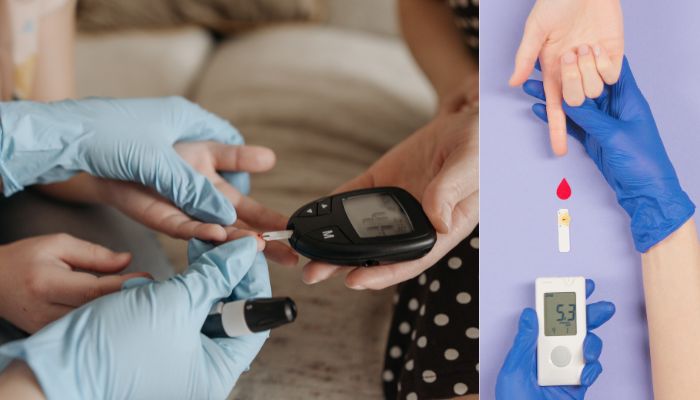10 Proven Ways to Reduce Your Diabetes Risk
Discover evidence-based strategies to lower your diabetes risk through diet, exercise, and lifestyle changes. Learn practical tips for prevention and maintaining healthy blood sugar levels.Reducing the risk of diabetes is crucial for maintaining overall health, especially considering the increasing prevalence of this condition.
Table of Contents
- Understanding Diabetes Risk
- Early Warning Signs
- Diet Modifications
- Exercise Strategies
- Lifestyle Changes
- Natural Remedies
- Medical Monitoring
- Risk Factors
- Prevention Tips
- When to See a Doctor
1. Understanding Diabetes Risk {#understanding}
Diabetes affects millions worldwide, but the good news is that type 2 diabetes is largely preventable. By understanding your risk factors and making proactive changes, you can significantly reduce your chances of developing this chronic condition.
Key Statistics:
- 1 in 3 adults have prediabetes
- 90% of type 2 diabetes cases are preventable through lifestyle changes
2. Early Warning Signs {#signs
Recognizing early warning signs is crucial for prevention. Watch for:
- Increased thirst and frequent urination
- Unexplained fatigue
- Blurred vision
- Slow-healing wounds
- Frequent infections
3. Diet Modifications {#diet
- Omega-3 Fatty Acids: Consuming foods like salmon, chia seeds, and walnuts can help thin the blood naturally and reduce inflammation.
- Vitamin E-Rich Foods: Include almonds, sunflower seeds, and spinach in your diet. Vitamin E acts as a natural blood thinner and helps improve circulation.
- Garlic and Ginger: These spices are known for their anti-clotting properties. Adding fresh garlic or ginger to your meals can help improve heart health and blood flow.
Foods to Embrace: Whole grains, Leafy greens, Lean proteins, Healthy fats, Low-glycemic fruits
Foods to Limit: Refined sugars, Processed carbohydrates, Sugary beverages, Excessive alcohol, Trans fats
Sample Meal Plan:
Breakfast: Steel-cut oats with berries, Greek yogurt, Handful of nuts
Lunch: Quinoa salad with vegetables, Grilled chicken breast, Olive oil dressing
Dinner: Baked fish, Roasted vegetables, Brown rice
4. Exercise Strategies {#exercise}
- Exercise Regularly: Even simple activities like brisk walking, yoga, or stretching can significantly improve blood flow and insulin sensitivity.
- "Exercise Snacking": Engaging in 2-3 minutes of light exercise every hour, such as stretching or walking, can keep blood sugar levels stable throughout the day.
- Drink Plenty of Water: Staying hydrated helps maintain blood viscosity, improving blood flow and assisting the kidneys in flushing out excess sugar.
Recommended Activities:
- Aerobic Exercise:
- 150 minutes of moderate activity weekly
- Walking, swimming, or cycling
- Split into 30-minute daily sessions
- Strength Training:
- 2-3 sessions per week
- Focus on major muscle groups
- Include bodyweight exercises
- Flexibility Work:
- Daily stretching
- Yoga or Pilates
- Active recovery exercises
5. Lifestyle Changes {#lifestyle}
Improve Sleep Quality: A cooler room temperature and the use of a gravity blanket can enhance sleep quality, which in turn helps manage blood pressure and blood sugar levels.
- If you are on prescription blood thinners or other medications, consult a healthcare provider before trying natural remedies to avoid potential interactions.
- Regular monitoring of blood sugar and blood pressure is essential for adjusting dietary and lifestyle interventions effectively.
Key Habits to Develop:
- Sleep Hygiene:
- 7-9 hours nightly
- Consistent sleep schedule
- Dark, quiet environment
- Stress Management:
- Regular meditation
- Deep breathing exercises
- Time in nature
- Work-Life Balance:
- Regular breaks
- Active commuting
- Standing desk usage
6. Natural Remedies {#natural}
Evidence-Based Supplements:
- Turmeric: Curcumin, the active compound in turmeric, has anti-inflammatory and blood-thinning effects. Try adding turmeric to soups, teas, or curries.
- Adding a pinch of cinnamon to your breakfast can be beneficial.
- Cinnamon, Berberine, Magnesium, Chromium, Alpha-lipoic acid
- Deep Breathing and Meditation: Techniques like the 4-7-8 breathing exercise can help lower blood pressure and reduce stress levels.
- Laughter Therapy: Incorporate activities that make you laugh, as laughter reduces stress hormones and improves blood flow.
7. Medical Monitoring {#monitoring}
Regular Check-ups:
- Annual physical examination
- Blood glucose testing
- HbA1c monitoring
- Blood pressure checks
- Cholesterol screening
8. Risk Factors {#risk}
Understanding Your Risk Profile:
- Non-Modifiable Factors:
- Family history
- Age
- Ethnicity
- Previous gestational diabetes
- Modifiable Factors:
- Weight
- Physical activity level
- Diet choices
- Smoking status
9. Prevention Tips {#prevention}
Daily Habits for Success:
- Monitor portion sizes
- Stay hydrated
- Read food labels
- Track physical activity
- Maintain healthy weight
- Regular health check-ups
10. When to See a Doctor {#doctor}
Consult Healthcare Providers If:
- Family history of diabetes
- Overweight or obese
- High blood pressure
- Unusual symptoms persist
- Prediabetes diagnosis
Conclusion
Preventing diabetes is possible through consistent, mindful choices in diet, exercise, and lifestyle. Start implementing these changes gradually and build sustainable habits for long-term health.
Read More: The Science Behind Movement and Mental Wellness

